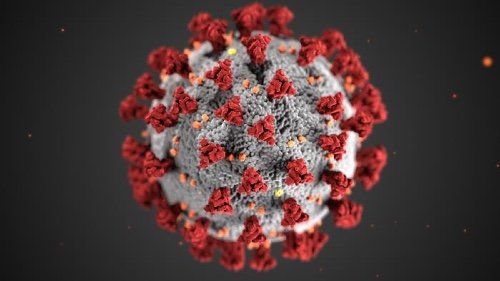Chest Imaging in COVID-19 Management: International Consensus Recommendations
Fleischner Society outlines suggestions for when chest imaging can beneficially contribute to infection management.

Even though industry consensus discourages the use of chest imaging for COVID-19 diagnosis, the role of both chest X-Ray (CXR) and chest CT continues to emerge. In an effort to provide clarity for implementing imaging, the international Fleischner Society published a consensus statement Tuesday, offering suggestions for scenarios where chest imaging is appropriate.
The 10-nation panel included representatives from the countries carrying the heaviest COVID-19 burden: the United States, Italy, China, Germany, France, United Kingdom, Netherlands, South Korea, Canada, and Japan. The group included 15 thoracic radiologists, 10 pulmonologists/intensivists, and 1 pathologist, as well as experts in emergency medicine, infection control, and laboratory medicine. They published their consensus statement simultaneously in Radiology and Chest.
The panel acknowledged that the clinical body of knowledge surrounding COVID-19 is growing and rapidly changing, adding that the agreed-upon recommendations represent the most actionable information available to date.
“We need to understand that conditions across the globe vary greatly,” said Geoffrey D. Rubin, M.D., George B. Geller Professor of Cardiovascular Research and professor of radiology and bioengineering at Duke University School of Medicine. “Our goal in developing this statement was to offer guidance that is sensitive to these differences and applicable broadly.”
To provide the clearest guidance, the group offered imaging suggestions based on three clinical scenarios with differing risk factors, community conditions, and resource constraints – a patient with mild COVID-19 features, a patient with moderate-to-severe COVID-19 features, and a patient with moderate-to-severe COVID-19 features in a resource-limited environment.
All guidance applies to adult patients who have presented with features consistent with COVID-19 infection.
Based on their discussions, the panel drafted five main recommendations, as well as three additional suggestions.
Overall, the panel offered this guidance:
- Imaging is not routinely indicated in asymptomatic individuals.
- Imaging is not indicated in patients with mild COVID-19 symptoms unless they are at risk for disease progression.
- Chest imaging is indicated in patients with COVID-19 with worsening respiratory status.
- Patients with moderate-to-severe COVID-19 features are indicated for imaging regardless of their COVID-19 test results.
- In environments with limited personal protection equipment or COVID-19 testing, imaging should be used for medical triage of patients with suspected COVID-19 who have moderate-to-severe symptoms, as well as a high pre-test probability of disease.
In addition, the panel offered these additional suggestions:
- CT is appropriate in patients with functional impairment and/or low blood oxygen after COVID-19 recovery.
- Daily, repeated chest X-rays don’t offer any improvements in outcomes for stable, inbutaed patients over on-demand imaging.
- Reverse-transcription polymerase chain reaction (RT-PCR) testing should be performed on asymptomatic patients who have COVID-19 features on CT scan to potentially limit further transmission.
The group reiterated that these guidelines are based on the best information gathered and could be changed in the future.
“[This statement] represents opinion at a moment in time within a highly dynamic environment where the status of regional epidemics and the availability of critical resources to combat those epidemics vary daily,” the team said. “The evidence base supporting the use of imaging across the scenarios presented is scant, and the advice presented herein may undergo refinement through rigorous scientific investigation, exposing nuances of image interpretation that may lead to prognostic information and guide management decisions.”
Ultimately, Rubin said, new roles for thoracic imaging could emerge in establishing treatment response or in characterizing patients that might be good responders to novel therapies.
Can CT-Based AI Radiomics Enhance Prediction of Recurrence-Free Survival for Non-Metastatic ccRCC?
April 14th 2025In comparison to a model based on clinicopathological risk factors, a CT radiomics-based machine learning model offered greater than a 10 percent higher AUC for predicting five-year recurrence-free survival in patients with non-metastatic clear cell renal cell carcinoma (ccRCC).
Could Lymph Node Distribution Patterns on CT Improve Staging for Colon Cancer?
April 11th 2025For patients with microsatellite instability-high colon cancer, distribution-based clinical lymph node staging (dCN) with computed tomography (CT) offered nearly double the accuracy rate of clinical lymph node staging in a recent study.